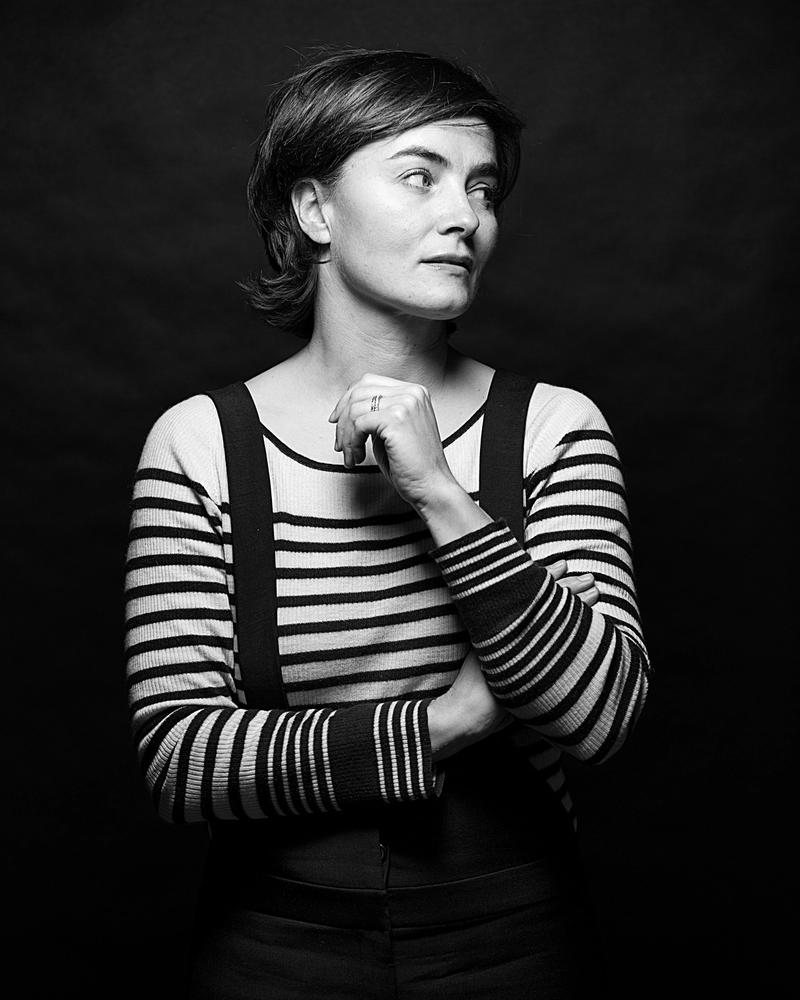Paloma Varga Weisz
Born into an artistic family and trained in the traditional techniques of woodcarving, Paloma Varga Weisz, who lives and works in Düsseldorf, Germany, uses sculpture, watercolour, and drawing to explore a world of masquerades and disguises, revealing histories and creating narratives. After she entered the art world in the early 2000s, her career took off quickly, with numerous international exhibitions, stipends, and awards. In 2012, six of her works on paper were acquired by the Museum of Modern Art, New York. Her unusual woodcarvings are a result of studies in Garmisch-Partenkirchen (Bavaria, Germany), 1987 - 1990, where she was taught traditional techniques of woodcarving, modeling and casting. This was followed by further studies, under Tony Cragg, at the Staatliche Kunstakademie Düsseldorf in 1990 - 1998. As Varga Weisz herself put it (in conversation with Anna McNay, published in the magazine sculpture on November 16, 2020):
It was really by accident that I ended up in Garmisch-Partenkirchen. I had applied to the art academies in Düsseldorf, Stuttgart, and Frankfurt, but kept receiving rejections. A friend of mine went to the school, which was how I knew about it. Its primary purpose was to teach people to become carpenters, but there was a smaller class where you could learn woodcarving. There were only 15 students in total, five in each year, so it was extremely personal, and we had a wonderful teacher. Ending up there really was the best accident I ever had; I was surrounded by nature, learning very traditional techniques of modeling in clay, making forms in plaster, drawing, and life drawing. […] After my three years at that school, I applied again for the academy in Düsseldorf and was accepted. The first thing they told me was to forget everything I’d learned because it was traditional, old-fashioned, and had nothing to do with art. For a long time, I felt very confused and insecure. […] It was really at the end of my time at the academy that I rediscovered wood. I wouldn’t be where I am now without that period of confusion. I had this dream of trying to say what I wanted to say in a very simple way—just having a small piece of wood and a knife is enough to bring your work to life.
The woodcarving tradition Varga Weisz belongs to (dating back to the early Middle Ages [late 5th to the 10th Century]), has been central in shaping the art of Germany, where it was used for the vivid and lavish decorations given to catholic church interiors, and altarpieces depicting scenes from the life of Christ and the apostles etc. Carving and bringing life to limewood is something celebrated workshop masters have been doing for centuries, and Varga Weisz is one of the more recent additions to this long lineage of distinguished practitioners.
Also working in cast bronze as well as works on paper Varga Weisz have countless prestigious international exhibitions to her name. Paloma Varga Weis’s work is included in the collections of the Kunstsammlung Nordrhein-Westfalen and Kunstmuseum Kunstpalast (Düsseldorf, Germany), the Bonnefanten Museum (Maastricht, The Netherlands), the Israel Museum (Jerusalem), the Museum Kurhaus Kleve (Kleve, Germany) and the Museum of Modern Art, MoMA (New York, USA), as well as other private collections.
Major solo exhibitions include Glory Hole, Le Consortium (Dijon, France, 2021); Bumped Body, Henry Moore Institute (Leeds, England, 2020); Bumped Body, Bonnefanten Museum (Maastricht, The Netherlands, 2019); Skulpturenhalle, Thomas Schütte Foundation (Holzheim, Germany, 2017); Root of a Dream, Castello di Rivoli Museo d’Arte Contemporanea (Turin, Italy, 2015); Glory Hole, Salzburger Kunstverein (Salzburg, Austria, 2015); Krummer Hund, Kabinett für aktuelle Kunst (Bremerhaven, Germany, 2013); Maison de Plaisance, Museum Morsbroich (Leverkusen, Germany, with Rosemary Trockel, 2012) and Spirits of My Flesh, Chapter (Cardiff, England, 2011), among other.
Her works have also been included in numerous group shows, at Kunsthalle Museum Bremerhaven (Germany, 2023); The National Gallery (London, England, 2021); Museum Kunstpalast (Düsseldorf, Germany, 2017); Hayward Gallery (London, England, 2014); Kunstsammlung Nordrhein-Westfalen (Düsseldorf, Germany, 2015; 2005); Museum of Modern Art (New York, USA, 2012); Kunsthalle Krems (Krems, Austria, 2010); the Berlin Biennale (2006) and the Venice Biennale (2005), to name a few.
Copyright Firestorm Foundation
